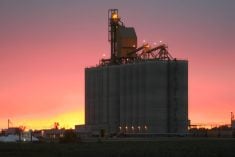The cattle market appears to be heading lower into summer as consumer buying is unable to sustain the higher price structure. Despite the Memorial Day surge in demand, the beef and cattle markets remain under pressure. Ground beef prices continue to edge higher on the retail shelf but higher valued cuts are the same as last month or lower. Packing margins have moved into red ink while choice product values trading at $178/cwt, down from $191/cwt in early April.
Fed cattle in Texas traded at $109/cwt in mid May, down from the spring highs of $124/cwt. At the same time, Alberta slaughter cattle sold for $103/cwt, down nearly $13 from a month earlier. Feeder cattle are also $10/cwt to $12/cwt lower with feedgrain prices edging higher in Western Canada and feedlot margins struggling near breakeven territory. Consumers are spending more money on gas and other staple items, which has limited grocery and restaurant expenditures.
Read Also

Cancer agency reclassifies another herbicide ‘probably carcinogenic’
The WHO’s cancer research agency has now put atrazine, a herbicide well known to corn growers, in the same potential-hazard category where the agency put glyphosate.
Cattle on feed in Alberta and Saskatchewan as of May 1 were 1.001 million, down three per cent in comparison to May of 2010. April placements totaled 144,000, down seven per cent from last year while marketings were down 18 per cent. Canadian beef production for the week ending May 7 was 353,479 mt, down 12 per cent from last year while the total number of cattle slaughtered was down 10 per cent. Carcass weights are down nearly 14 pounds from last year resulting in the lower production. Canadian beef supplies will continue to run below year ago levels for the remainder of the year. Shrinking calf crops and lower on feed numbers has potential to result in a 15 per cent decline in total beef production for 2011. For 2012, production should drop an additional eight per cent to 10 per cent depending on the carcass weights.
PRODUCTION DECLINES
Larger placements and on feed numbers will result in larger U.S. beef production in the first nine months of 2011. However, U.S. beef production is expected to drop sharply under year ago levels fourth quarter. This trend of year over year declines in beef production should continue into 2012. Early estimates have 2012 beef production down almost 1.2 billion pounds in comparison to 2011. Consider the following table.
The 2012 calendar year will be the first year the beef complex experiences a sharp decline in U.S. production.
The demand equation is harder to define and yet more important. Cattle producers have experienced abnormal purchasing patterns through the recession, during 2010 and in the first half of 2011. U.S. consumer confidence has been stuttering around 60, which is down 50 per cent from highs of 2007. A number above 80 actually confirms that people will be better off in upcoming months resulting steady growth. GDP actually slipped in the first quarter of 2011 to 1.8 per cent, down from 3.1 per cent in the final quarter of 2010. U.S. inflation is now running upwards of 3.2 per cent, which is not a good signal when income has not increased even one per cent. Statistics Canada reported a GDP growth rate of negative 0.2 per cent in February while inflation was at 3.3 per cent.
I think producers get the picture that North America is in a modest but steady economic recovery. Does this justify feeder cattle prices 40 per cent higher than last year? I think the cattle market got ahead of itself with steady momentum from all commodities in general. A weak U.S. dollar along with stronger equity markets provided an environment for a healthy rise in the beef complex. However, now that the U.S. dollar appears to be strengthening, inflation is becoming a larger concern and interest rates are poised to show regular gains later in the year, the economic environment will be tempered and we haven’t even proved that employment is really improving.
VOLALITY
Tyson Foods CEO Donnie Smith warned that meat industry is facing months of volatility. Beef stocks will tighten next year but the demand will fluctuate like a roller coaster. Consumers have a tendency to spend money, but then there is a tendency to pull back sharply. This isn’t only for food but on all items, which can seriously affect an economy. Most of the U.S. population is not much better off than they were last year at this time. Consumer expenditures and retail sales will be very important when determining the price direction for cattle over the next year.
The cattle market is moving through a corrective phase which will last until mid summer. Lower beef production in the fourth quarter along with ongoing increases in consumer income should cause prices to strengthen into the fall period and retest the April highs next winter.
GeraldKlassenanalysescattleandhogmarkets inWinnipegandalsomaintainsaninterest inthefamilyfeedlotinSouthernAlberta.For commentsorspeakingengagements,hecanbe reachedat [email protected] or2042878268
———
U.S. Quarterly Beef Production (million pounds)
Quarter 2010 2011 2012
1 6,251 6,411 5,950
2 6,547 6,715 n/a
3 6,768 6,770 n/a
4 6,741 6,325 n/a
Total 26,304 26,221 25,080
** Source USDA














